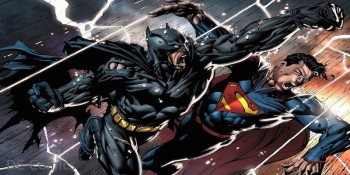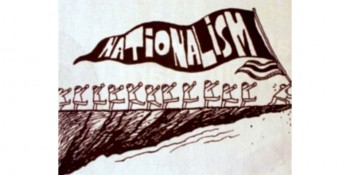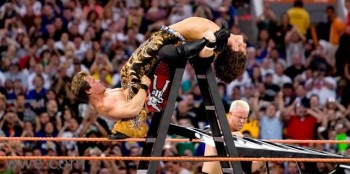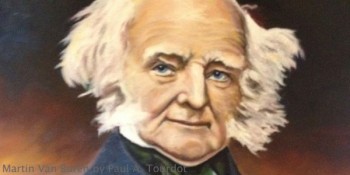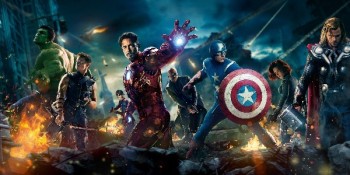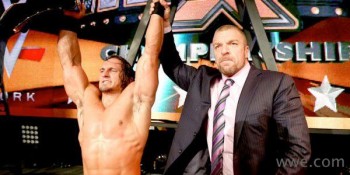Seventy-five years ago, an icon was created. A masked detective, stalking the cowardly and villainous lot of Gotham City, the Bat-Man was a new force for good, a hero for a nation facing a Great Depression, urban crime, and the prospect of a second World War.
Bob Kane, an artist for National Periodicals (the future DC Comics), was tasked with creating a new superhero following the success of Jerry Siegel and Joe Shuster’s Superman. Kane designed a blonde-haired, acrobatic man in a red jumpsuit and a domino mask. But before he brought the proposal back to National, Kane looked to his friend, Bill Finger, for advice.
Milton “Bill” Finger was born in Denver, Colorado, in 1914. An aspiring writer, Finger met Kane at a party and forged a friendship. When Kane approached Finger for advice, Finger was a shoe salesman, seeking a way to jumpstart his writing career.
Finger completely reworked Kane’s Bat-Man proposal, changing the color scheme and adding the famous cape and cowl. The high-flying adventurer of Kane’s became the brooding vigilante we know today thanks primarily to the contributions of Bill Finger.
Three-quarters of a century later, we celebrate the work of Kane and Finger in every corner of our culture. Batman movies have made nearly $4 billion worldwide, DC releases over a dozen comics linked to the Batman character every month, and the Fox Broadcasting Company will soon be premiering a new television series set in Bruce Wayne’s home city, titled Gotham.
All of these works include the statement: “Batman created by Bob Kane.” Finger, despite his contributions to the birth of the icon, receives no such honor. Now, over 40 years after his death, Finger’s family is looking to fix this injustice — not by stalking the shadows, but by bringing the facts into the light.
Athena Finger, a math professor in south Florida, is Bill’s only living grandchild, and she intends to set things right.
“I have been building up to this ‘coming out’ into the public,” Ms. Finger said in an exclusive interview with Curiata.com. “This was the right time to face the fans and address the issue of my grandfather and what can be done to rectify it. Changing history is what it’s all about.”
Born two years after her grandfather’s death, Ms. Finger is seeking a way to honor the man she never knew by getting him the co-creator credit he rightfully deserves.
“The true question now is what didn’t Bill contribute? He came up with all the defining characteristics of the story and characters,” Ms. Finger explained. “He added the color scheme, the cowl, the cape, the gloves, the naming of Gotham City, and most of our beloved villains.”
Still, the obstacles for the Finger family are immense. DC Comics and its parent company, Time Warner, continue to honor a deal made with Kane decades ago. In that arrangement, Kane signed away any ownership rights in favor of a creator credit.
Asked why Finger was unable to get the same deal, his granddaughter stated that she is unaware of him ever seeking out such credit. Ultimately, she said, “Bob [Kane] had better advice and money.”
According to Ms. Finger, it is the way people interpret the laws that is preventing change, but she isn’t about to give up the fight.
“We are exploring our options,” Ms. Finger said. “I am hoping to resolve this issue one way or another.”
Kane, who died in 1998, even stated his support for his old friend, writing in his autobiography: “I must admit that Bill never received the fame and recognition he deserved. He was an unsung hero … if I could go back 15 years, before he died, I’d like to say, ‘I’ll put your name on it now. You deserve it.'”
Despite the acrimony sometimes directed toward Kane by comic book fans, Ms. Finger was clear about the relationship between Kane and her family: “There are no hard feelings.”
Finger’s contributions are not limited to the Batman franchise either. In addition to having a hand in the creation of Bat-villains including the Joker, the Riddler, the Penguin, and more, Finger is also the co-creator of Wildcat and the original Green Lantern. His work extended to television and movies, and he even worked a bit for DC’s rival, Marvel.
But Finger’s legacy will forever be tied to the Caped Crusader, both in the minds of comic book fans and his own family.
“I have always known about the importance of my grandfather’s contributions to the Batman,” his granddaughter said. And, despite the problems with DC, Ms. Finger continues to enjoy the result of her grandfather’s great work.
“I do watch the movies and have started reading more comics lately,” Finger said. “I am curious about how [Ben Affleck] is going to portray the Bat.”
Ms. Finger will make sure others know her grandfather’s work as well. After all, Finger’s contributions helped to create an icon.
“I am awe-struck by the influence this mythos has had on the fans!” Ms. Finger said.
The injustice against a man so instrumental in the creation of an American mythology is finally gaining the attention it deserves. And Ms. Finger isn’t on this (caped) crusade alone.
Finger’s coining of the name of Gotham City has led to the creation of the latest of several Facebook groups dedicated to giving the man credit for his contributions. Ms. Finger offered her support for the goal of the group.
“I would love to see that,” she said.
The Cape Creator: A Tribute to Bat-Maker Bill Finger is an in-production, crowdfunded documentary that aims to honor the man who continues to go unrecognized by DC Comics. While its initial fundraising goal has already been reached, the organizers of the Kickstarter campaign are asking for additional support to allow for a longer, more in-depth movie.
Whether it is through documentaries, books, Facebook groups, or simply word of mouth, change must ultimately come through education.
“I want people to continue spreading the word about Bill and his connection to Batman,” Ms. Finger said.
For more information on Bill Finger, check out Marc Tyler Nobleman’s book Bill the Boy Wonder: The Secret Co-Creator of Batman.
You can also join the fight for justice on Facebook:
The Cape Creator: A Tribute to Bill Finger, the Secret Co-Creator of Batman
Credit Bill Finger for Cocreating Batman and Naming Gotham
Bill Finger Appreciation Group

